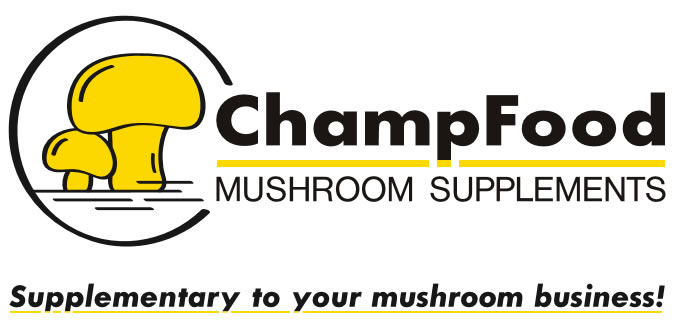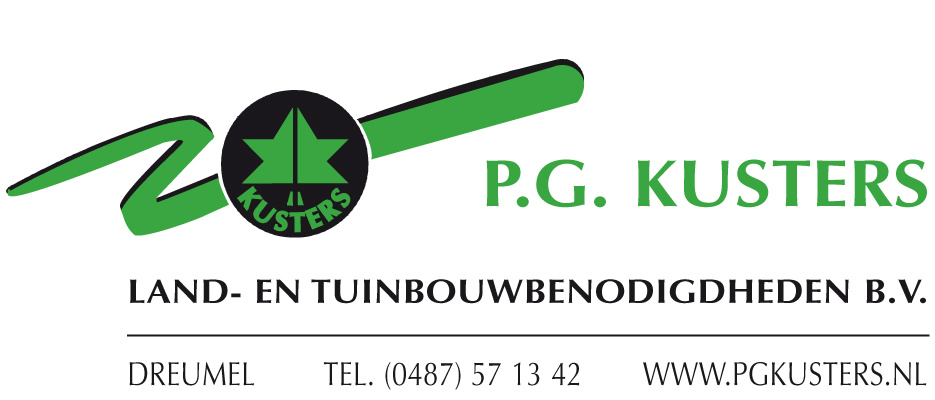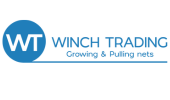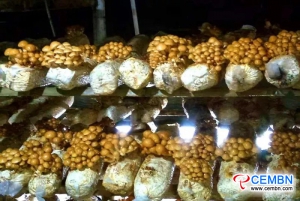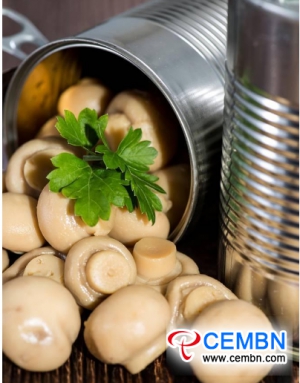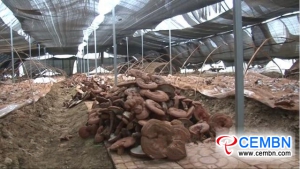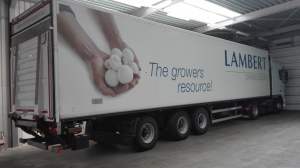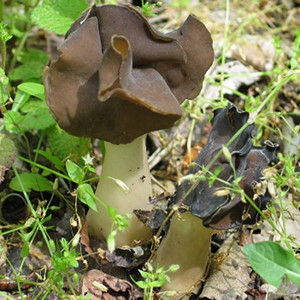
Mushroom Matter
Welcome on our platform. Why MUSHROOM MATTER? Because mushrooms play an important role in our lives as well in business. Our goal is to bring the world the very latest mushroom news with the upmost care to support the positioning of our beloved Mushroom.
Growing Pholiota nameko can be a lucrative business
Recently, it is the harvest time of Pholiota nameko in Bianhuang Village, Qimeng Town, Guizhou Province of China.
Qimeng Town used to lead a tardy development speed on aspect of agriculture, over the years, under the leadership of local town party committee, villagers have been vigorously driven to embark on Pholiota nameko farming with the superiority of local natural resources and climatic conditions.
Pholiota nameko presents yellow and tan color, it is in golden color during the maturation period. In addition, Pholiota nameko holds good or even excellent taste and it is also a kind of health-care food that features low calorie and low fat.
Up to now, over 17,500 kg of Pholiota nameko have been output in Bianhuang Village, gross revenues hit at least 70,000 CNY.
In China, production of mushroom cans mainly gathers in Fujian, Liaoning, Shandong and Henan Province, Button mushroom is the top variety.
Nowadays, export market for canned mushroom is constantly expanding and showing the diversified trend. Over the years, China exports mushroom cans to over 180 nations and regions, it especially exploits the markets in ASEAN and along the One Belt One Road. In 2015, China exported 127,000 tons of mushroom cans to nations along the One Belt One Road, export value reached 160 million USD, which respectively accounts for 54% and 41% of that of China.
In 2015, China’s gross export on mushroom cans came to 237,000 tons, export value hit 390 million USD, of which canned Button mushrooms occupied 185,000 tons and valued 250 million USD.
Artificial planting of Reishi mushroom got succeeded
Recently, Reishi mushrooms artificially planted in Yunhe Base of Baihe Town, Fang County, Hubei Province of China are evolving into the maturation and workers are busy with the collection work of spore powder, which indicates the successful trial planting.
Spore powder of Reishi mushroom agglomerates the essence of Reishi mushroom, it is packed with all genetic material and health-care function of Reishi mushroom, thus gaining high medicinal values.
“By now, Reishi mushrooms cultivated in two sheds have yielded fruitful results, mu output on spore powder reaches 500 kg, Reishi mushrooms are processed or made into bonsais, slices and wines in accordance with shapes and sizes, products are quite preferred by consumers,” said principal of Yunhe Base.
Over the years, Siyang County, Jiangsu Province of China persists in taking high-efficiency mushroom industry as the holder that promotes the construction of new rural demonstration county, propels farmers to increase earnings, unswervingly pushes the moderate scale management of agriculture, especially highlighting the powerful support provided by local under-forest development pattern, and comprehensive utilization mode of mushroom residues. Up to now, Siyang County has become one of the largest industrialized mushroom bases in China.
“After years of development, up to now, we have built 19 mushroom bases, and enterprises engaging in industrialized mushroom production. Characteristic mushroom varieties cover Enoki, King oyster, Button, Straw and other 10,” said head of Siyang County with enthusiasm.
Nowadays, mushroom growing is seized as one of the leading industries that propel farmers to increase incomes and grow rich. In Siyang County, mushroom farming firmly provides 2800 stable jobs for growers, annual acquisition volume on straw, sawdust and other agricultural wastes comes to nearly 60,000 tons.
Jiangsu Huaixiang Mushroom Garden: Daily output on fresh Pleurotus eryngii comes to 50 tons
On November 12, Eryngii mushrooms cultivated in Huaixiang Mushroom Garden of Huai’an City, Jiangsu Province of China are in sales time.
“Daily output on fresh Pleurotus eryngii comes to 50 tons,” introduces person in charge of the garden warmly. After years of endeavor, industrialized mushroom production has become the main force in Huai’an City. Nowadays, mushrooms produced in the city involve Button, Pleurotus eryngii, Enoki, Shiitake, Oyster, Straw and other 10 varieties.
Pleurotus eryngii is known as King oyster mushroom, it has a light brown to grey cap with a robust white shank. Eryngii can grow up to a height of 10 centimeters. The average diameter of the cap varies between 3 to 10 centimeters. Taste of the mushroom is comparable to the taste of nuts (almond) while its dense texture will even stand up to grilling on a BBQ! The Eryngii can be grown the majority of the year, in addition to China, it is mostly imported from Korea.
First European production site for Lambert Spawn
In February this year an announcement was made that Lambert Spawn Europe had a change of ownership. Champfood sold all their shares to Lambert Spawn USA and transferred the daily management to Ies Hooglugt who was already responsible for the European business. Ies and his team of Lambert Spawn searched for several possibilities to establish an European production site and concluded in 2018 on a production facility in Venlo. In May this year the construction of this facility started and the site will be fully operational in the first half of 2019.
The same production process and knowledge of spawn in the US will be used in the Dutch production site. Therefore the same quality of spawn can be guaranteed as well as the possibilities to distribute faster and more efficient to their customers. The new production site will be responsible for producing and distributing spawn to the European, African and Middle Eastern market and has his own distribution channel. Recently they have added Kieran Smyth to their team, who will be responsible for the English and Irish Market. Growth and delivering quality spawn is the keyword for Ies and his team. Lambert Spawn also has a strong focus on innovation, in which the factory in Venlo will also play an important role.
Next to the introduction and launch of a complete new production site, Lambert Spawn will also celebrate their 100th anniversary next year! In May 2019 they will celebrate this huge milestone together with the official opening of their production site, so write down May the 21st. (day before the Dutch Mushroom Days) in your agenda! More news will follow in the coming weeks and months.
The Lost & Found Fungi Project
We know that there are many species of fungi in the UK (around 15000 at the last count), but for many we have little idea about where they are or even whether they have become extinct. The Lost & Found Fungi Project focus on fungi that have been rarely recorded from our region, carrying out targeted surveys to establish whether they are still there, and if so whether they are genuinely rare or merely under-reported.
Find out more about the The Lost & Found Fungi Project.
Researchers say creation of 'bio-hybrids' from fungi and bacteria could be used to power devices
A regular shop-bought mushroom has been turned into an electricity generator in a process scientists hope will one day be used to power devices.
The “bionic mushroom” was covered with bacteria capable of producing electricity and strands of graphene that collected the current.
Shining a light on the structure activated the bacteria’s ability to photosynthesise, and as the cells harvested this glow they generated a small amount of electricity known as a “photocurrent”.
The fungi supported this process by providing the bacteria with viable surface on which to grow as well as nutrients to stay alive.
» Check out the video and also read more
Source: Independent - Josh Gabbatiss, Science Correspondent @josh_gabbatiss


